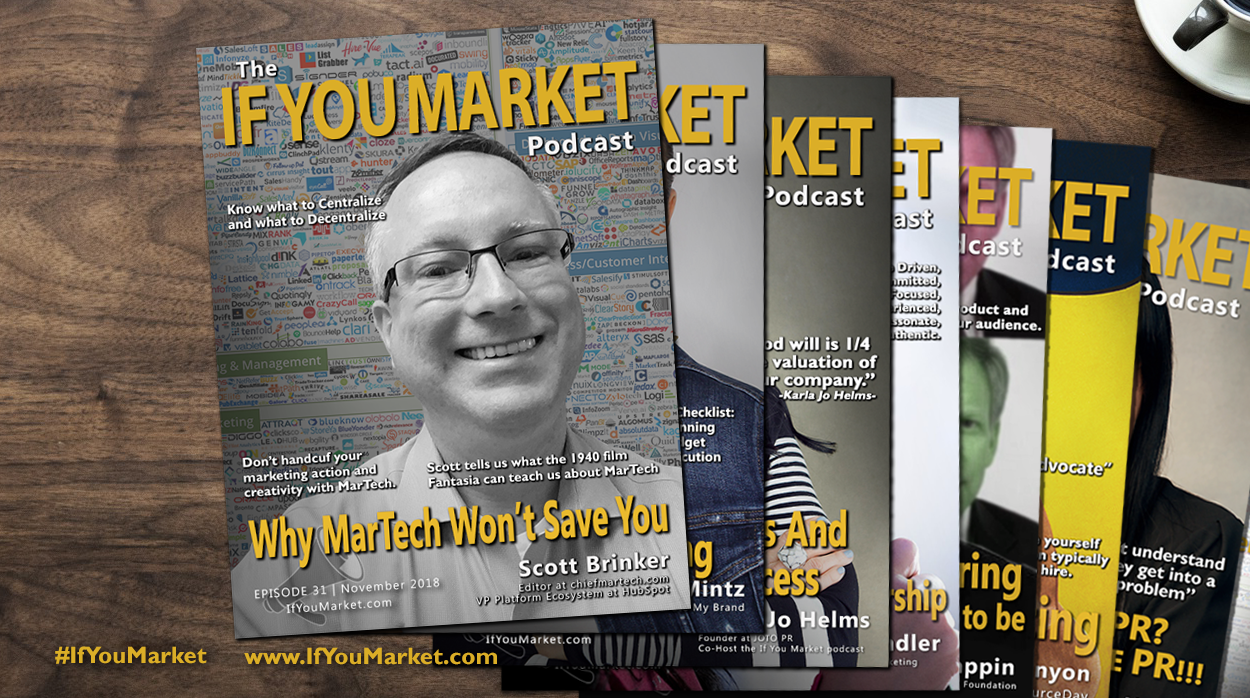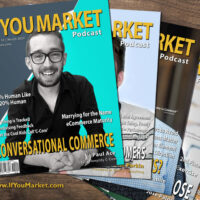
This week on the If You Market podcast we speak with Scott Brinker of ChiefMartech.com and HubSpot about MarTech. If you don’t know Scott Brinker then your probably also wondering what MarTech is, and what your listening to, and what a podcast is. 🙂
Scott publishes the chiefmartec.com blog, programs the MarTech conference, and wrote the book Hacking Marketing. He is VP platform ecosystem at HubSpot and was previously the co-founder of ion interactive.
Subscribe to the If You Market Podcast on iTunes: www.goo.gl/nfMMtW
Youtube: https://youtu.be/vjZ2y2KCylQ
Contact Scott Brinker
LinkedIn: https://www.linkedin.com/in/sjbrinker/
Web: www.chiefmartech.com
www.martechconf.com
www.hubspot.com
Twitter: @chiefmartech
Book: Hacking Marketing: Agile practices to make marketing smarter, faster and more innovative.
If you have questions about the If You Market podcast or would like to suggest a guest, please email us at info@IfYouMarket.com.
You can subscribe to The If You Market Podcast on apple iTunes or where ever you get your podcasts.
Transcript:




